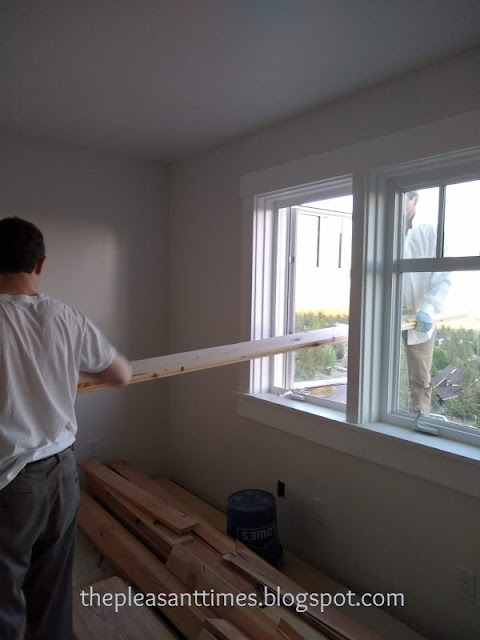While the last post dealt with the temporary kitchen, the real kitchen was getting a light! So was the dining room!
The contractor got a lot of advice from the crowds I am sure.
I had something specific in mind for the dining room, something that looked simple and early-American. I was very pleased with this fixture I found on Wayfair. It was exactly what I wanted.
I bought some shades to put over the bulbs later to make the light a bit easier on our eyes, but I like it without the shades as well.
And now for the main kitchen light...
We had a sense of how the other fixtures in the house should look, but it is hard to find things that look like a sense of something isn't it. Would you believe it, us shopping for lights was like us shopping for tile, and of course the selection to sort through was in the thousands....
Thankfully we found this beautiful schoolhouse-style shade at our local Lowe's, and it is perfect! Milk glass and black work well with the warm wood color we have around here.
We had a discussion about the placement of this light, much like the discussion about the windowsills. You cannot tell from the photos, but the light in the kitchen is not centered on the kitchen sink window, per the Lady of the House's better idea that the light should be centered on the off-center island instead. The project architect was horrified. And normally, Things Not Centered On Windows would have horrified the Lady, but she will be the main one doing the Chopping of Vegetables on the island and insisted on her idea. Besides, the sink was getting its own light and that would of course be centered on the window.
Then the contractor weighed in and was upset that an extension to the conduit to this light would have to be made in order to accommodate the un-centered request. This would require uninstalling it and re-installing it.
The architect (with advisor) and contractor check on the centering of the light fixture
But both the architect and the contractor were kind in the end and the light went in centered over the island. And to this day I am not sure that they even notice the light's position anymore.
Here I will insert a little boring detail because it was one of the things that the inspector did not like. In order to get the electrical wire from a decorative wood ceiling to the light, we had to run it in the narrow space between beams. To do this, w put in a pipe to house the wire, and chose to go with an "industrial" look of black metal, since we thought it might be visible. The inspector did not like the metal pipe we chose (oil pipe, it had a cool old cast iron look), and said it had to be replaced with plastic conduit, which would not look as authentic of course but would be safer. Metal will eventually corrode the Romex wiring. So we have a black plastic conduit up there but you can't really see it anyway!



















































